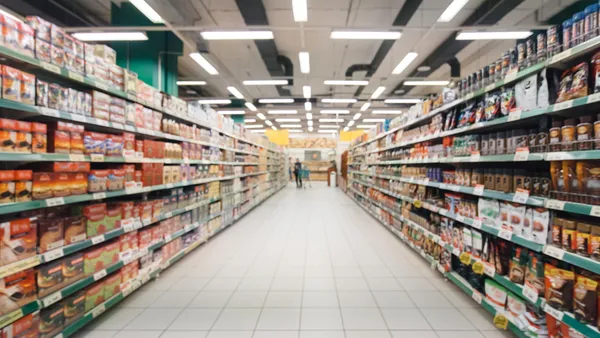The food and nutrition space has always been susceptible to fads, as millions of diet purveyors, nutrition experts, authors, and consumers search for a strategy that works, works quickly, and works easily on the road to a healthy diet and their target weight.
In a sector known for hot takes and viral advice on what you should and shouldn’t eat, the term “ultra-processed foods” (UPF) has burst onto the scene with unprecedented scope in recent months. Media monitoring on the subject captures hundreds, sometimes thousands, of news stories, blog posts and journal articles daily on the subject.
The state of M&A in the food industry
The UPF phenomenon is an ode to how a simple change in nomenclature can capture the attention of a mass audience. For decades, a comparably small cadre of motivated folks attacked the merits of packaged and processed foods. That approach never really made it into the mainstream, so proponents are now championing a new, different, and intimidating term to define the same foods they have long criticized.

Despite its weak intellectual underpinning, individuals and organizations seeking more government power and influence over product recipes and federal nutrition programs originated the term UPF and are prime movers in its recent ascension to public consciousness.
There are more than a few significant problems with the UPF narrative, but chief among them is just about everything we eat is processed in some way and the use of the terms “processed” or “ultra-processed” as a litmus test is a fatally flawed nutrition advice shortcut that moves us backward, not forward, on the journey to sound and actionable nutrition advice.
Millions of consumers – alone and in consultation with their healthcare providers – determine what kind of diet they need based on their unique values, lifestyle, and health status. Think gluten-free, organic, low sodium, or limits on sugar or saturated fat intake.
Given this landscape — combined with obesity-related health problems — the food sector has transformed the way it does business over the last 20 years by making the food supply healthier than it has ever been. Unlike a generation ago, every consumer now has access to the products they need to build a personalized, customized diet. Products with fewer calories and less fat, sugar and sodium are the norm, along with more whole grains, vitamins and minerals.
Keep up with the story. Subscribe to the Food Dive free daily newsletterEmail:Sign up
Think about popular sections in the grocery store. The beverage aisle has been transformed with thousands of healthier recipes and new product choices — the same for cereal, bread, and snacks. Altogether, food and beverage companies have introduced more than 30,000 healthier products in recent years. That’s not the marker of a sector stuck in the past nor tone deaf to consumers and public health trends.
Products with reduced sodium, saturated fat or sugar are popular and here to stay because they help consumers achieve the diet they need or aspire to.
But what, you might ask, have food companies done for consumers who want to avoid food chemicals? They created an entirely new “clean label” food category stocked with products that are devoid of artificial flavors, colors and preservatives. There is no official definition of what “clean label” means, but generally, it refers to food and beverage products with short ingredient lists, familiar, natural-sounding ingredients, and no artificial ingredients. The term and label is not regulated by any body of law in the U.S.
Nonetheless, reflecting the popularity of the clean label category, 33% of new food product introductions are classified as clean label. Experts predict the category will represent $48 billion in sales by 2032.
Most of America’s over 330 million consumers live in the real world, where many factors determine what we eat — including nutrition, affordability, shelf life, and convenience. The ongoing mission of the food sector is to make the food supply healthier while providing consumers with every conceivable product choice so they can construct the appropriate diet for themselves and their families.
Read More in Ingredients
Buckwheat in your ice cream? Quinoa in your milk? Sustainable grains emerge as a star ingredient
Ingredients in Focus: Maple water
Harken Sweets brings more superfood candy bars to the public in big retail push
How a Swedish company plans to dominate better-for-you snacking
RXBar founder ‘betting everything on protein’ with new venture
Ingredients in Focus: Hemp protein
Howtian debuts innovation in stevia sweetener market
Want to see more stories in Ingredients?
The nomenclature change from processed to ultra-processed has elevated the term in the nation’s nutrition debate for now, but the underlying issues have not changed. Individuals should eat a variety of foods in moderation, centered around lean protein, whole grains and fruits and vegetables. There is room for sugar, fats and oils and sodium in moderation.
The antidote to the UPF frenzy is for organizations tasked with food production to consistently remind consumers, influencers and policymakers about how they have made the food supply healthier and provided an amazing bevy of specialized, healthy products to choose from.
Will UPF mania make a difference? Keep an eye on the public policy arena and the work being done at the U.S. Food & Drug Administration — such as front-of-pack labeling, sodium reduction and sugar reduction — and the U.S. Department of Agriculture’s dietary guidelines and food assistance programs like SNAP as indicators of whether ultra-processed food is having an impact on government policy and thus the recipes of the food we eat.


